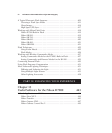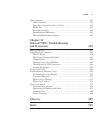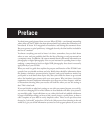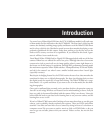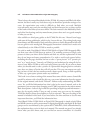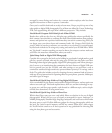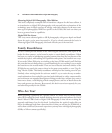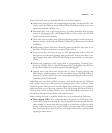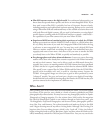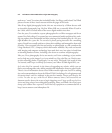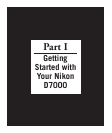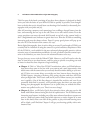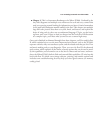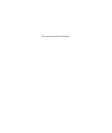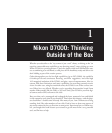■ How digital photography differs from film: The image is stored not on film
(which I call the first write-once optical media), but on a memory card as pixels that
can be transferred to your computer, and then edited, corrected, and printed with-
out the need for chemical processing.
■ What the basic tools of correct exposure are: Don’t worry if you don’t understand
these; I’ll explain them later in this book. But if you already know something about
shutter speed, aperture, and ISO sensitivity, you’ll be ahead of the game. If not,
you’ll soon learn that shutter speed determines the amount of time the sensor is
exposed to incoming light; the f/stop or aperture is like a valve that governs the
quantity of light that can flow through the lens; the sensor’s sensitivity (ISO set-
ting) controls how easily the sensor responds to light. All three factors can be var-
ied individually and proportionately to produce a picture that is properly exposed
(neither too light nor too dark).
It’s tough to provide something for everybody, but I am going to try to address the needs
of each of the following groups and skill levels:
■ Digital photography newbies: If you’ve used only point-and-shoot digital cam-
eras, or have worked only with non-SLR film cameras, you’re to be congratulated
for selecting one of the very best entry-level digital SLRs available as your first dSLR
camera. This book can help you understand the controls and features of your
D7000, and lead you down the path to better photography with your camera. I’ll
provide all the information you need, but if you want to do some additional read-
ing for extra credit, you can also try one of the other books I mentioned earlier.
They complement this book well.
■ Advanced point-and-shooters moving on up: There are some quite sophisticated
pocket-sized digital cameras available, including those with many user-definable
options and settings, so it’s possible you are already a knowledgeable photographer,
even though you’re new to the world of the digital SLR. You’ve recognized the lim-
itations of the point-and-shoot camera: even the best of them have more noise at
higher sensitivity (ISO) settings than a camera like the Nikon D7000; the speedi-
est still have an unacceptable delay between the time you press the shutter and the
photo is actually taken; even a non-interchangeable super-zoom camera with 12X
to 20X magnification often won’t focus close enough, include an aperture suitable
for low-light photography, or take in the really wide view you must have.
Interchangeable lenses and other accessories available for the Nikon D7000 are
another one of the reasons you moved up. Because you’re an avid photographer
already, you should pick up the finer points of using the D7000 from this book
with no trouble.
David Busch’s Nikon D7000 Guide to Digital SLR Photographyxxii



